What is sous vide cooking?
Sous vide (pronounced sue-veed) is a cooking technique used by the world’s best chefs. Foods are vacuum sealed in a bag and cooked in a precisely controlled, low-temperature water bath over a long time. This technique ensures perfect doneness in proteins like steak and chicken, while also creating a tender texture and retaining moisture.
While high-end restaurants have been using sous vide, which means "under vacuum" in French, for decades, the technique is now achievable for everyone, thanks to the availability of affordable and easy-to-use sous vide equipment like Anova’s line of Precision Cookers or the Anova Combi Oven.

Why should I cook sous vide?
Sous vide cooking is one of the most precise ways to cook. Other methods of cooking, such as traditional ovens, pressure cookers like Instant Pots, and skillets, don’t give you the same level of control over heat and temperature. This makes it challenging to consistently cook great food. Food ends up overcooked on the outside, with only a small portion in the center that is cooked to the desired temperature. However, since a sous vide immersion circulator, like an Anova Precision Cooker, is able to offer precise temperature control, you’ll find the following benefits:
-
Consistency
Because you cook your food to a precise temperature for a precise amount of time, you can expect very consistent results.
-
Taste
Food cooks in its own juices, concentrating flavor.
-
Texture
When proteins are cooked at low temperatures for an extended period of time, connective tissues break down, ensuring tenderness.
-
Moisture Retention
On average, steak cooked on a grill or skillet loses up to 40% of its volume due to moisture loss. When cooked sous vide at low temperatures, steak loses far less of its juices.
-
Flexibility
Precision cooking brings food to an exact temperature and holds it—it doesn’t require your constant attention. Overcooking sous vide food is a matter of hours, not minutes.
Types of Sous Vide Machines
Even though sous vide equipment has existed for decades in professional kitchens around the world, it has always been bulky, expensive, and filled with complex features. While sous vide equipment eventually made its way into high-end specialty retail shops, it still remained limited to chefs and consumers with extensive culinary experience. Cooking shows, social media, and online communities have furthered consumers’ knowledge of sous vide cooking, but it wasn’t until Anova released the first affordable and easy-to-use consumer device that sous vide became truly accessible to home cooks. Today, there are several sous vide options available. Below are a few options you to consider now that you’re ready to build your ultimate sous vide setup:
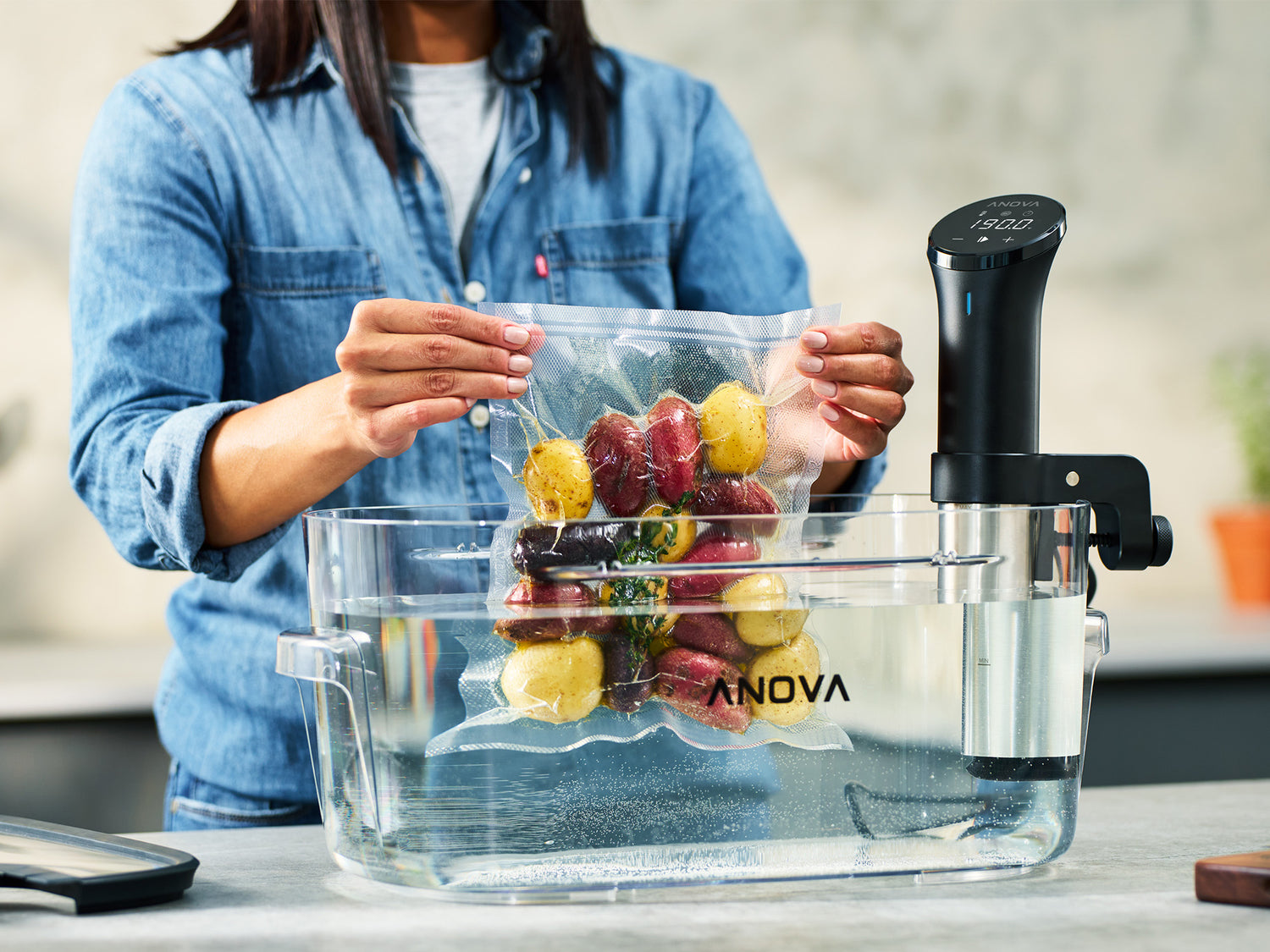
Sous Vide Immersion Circulator
Anova’s line of sous vide cookers are standalone immersion circulators that heat water and circulate it around the pot to evenly maintain precise temperatures. Immersion circulators are some of the most affordable and easy-to-use sous vide machine options. They do not come with a built-in water bath, so they take up very little space in your kitchen. Standalone sous vide cookers don’t require additional equipment to get started because they clamp on and adjust to most pots. Other examples include Breville, Instant, and All-Clad.
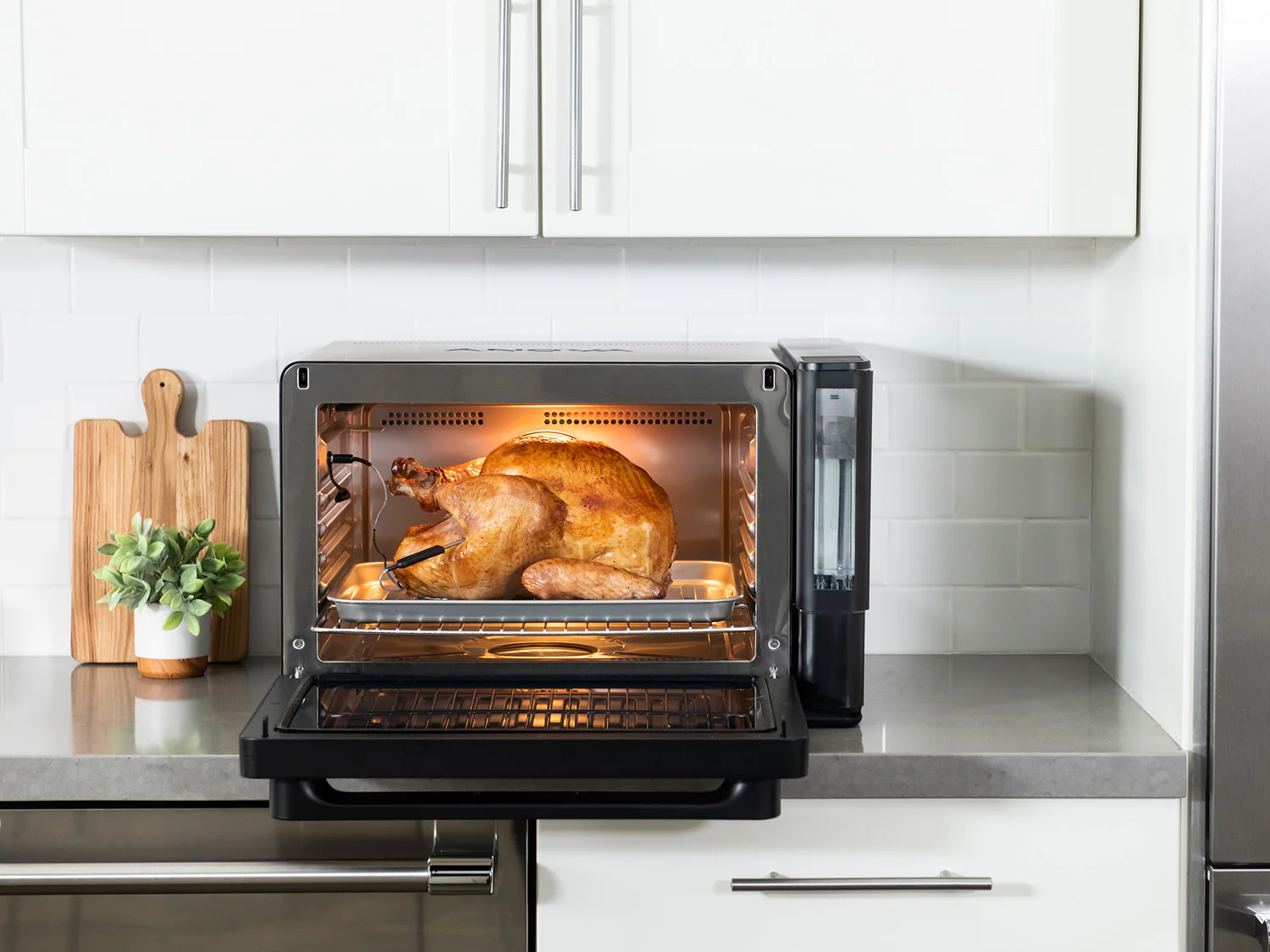
Anova Precision™ Oven
If you’d prefer to introduce new techniques into your culinary repertoire, you can also use the Anova Precision Oven’s Sous Vide Mode for sous vide results without the bag. Because of the way we’ve designed the temperature sensors and humidity control, the oven will precisely maintain the cooking temperature you set. You can choose to bag and cook your steaks in the Precision Oven just as you would with a Precision Cooker, or you can use the oven’s food probe to tell you exactly when the core of your food has hit your desired temp.
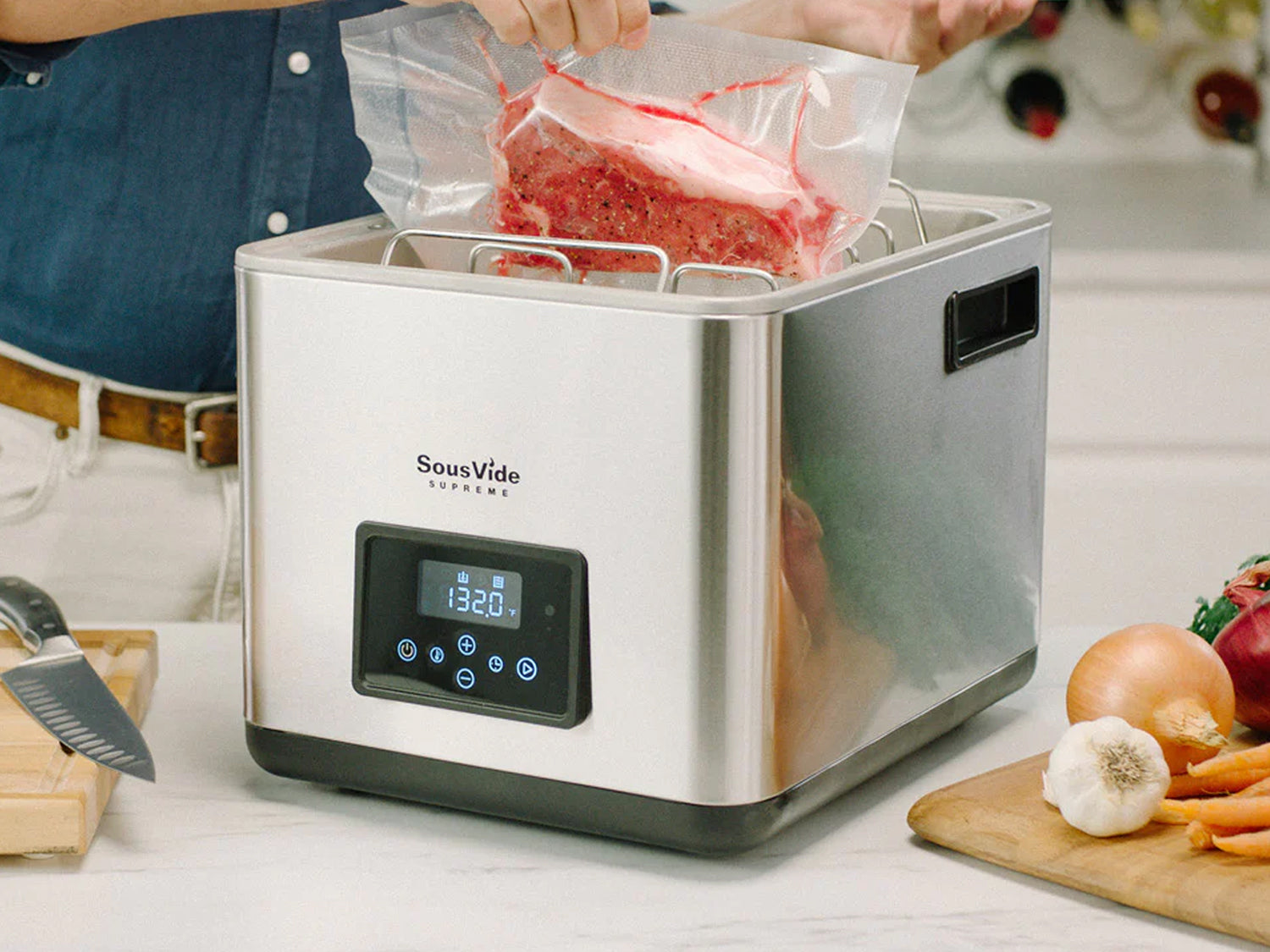
Sous Vide Water Oven
Water ovens are often referred to as countertop water baths. They are fully-contained, sous vide devices that are about the size of a microwave. Sous vide water ovens heat water, but unlike immersion circulators, they do not circulate the water. This is an important differentiator, as it often leads to inconsistencies in your food’s resulting texture. Examples of water ovens include Winco, Dash, and Sous Vide Supreme. Multi-use cookers like Ninja, Breville and Instant also offer sous vide options

DIY Sous Vide Hacks
Cooler, rice cooker, and slow cooker hacks are great options for exploring sous vide cooking before you decide to purchase a device. The Food Lab’s J. Kenji Lopez-Alt has a great post on sous vide beer cooler hacks.
Sous Vide Packaging
When cooking sous vide, sealing foods is essential. This prevents evaporation and allows for the most efficient transfer of energy from the heated water to your food. There are several different ways to seal your food—from vacuum sealer bags to placing your food in a plastic bag and removing the air with a straw, there’s an option for everyone. Here are a few of our favorite types of sous vide packaging:
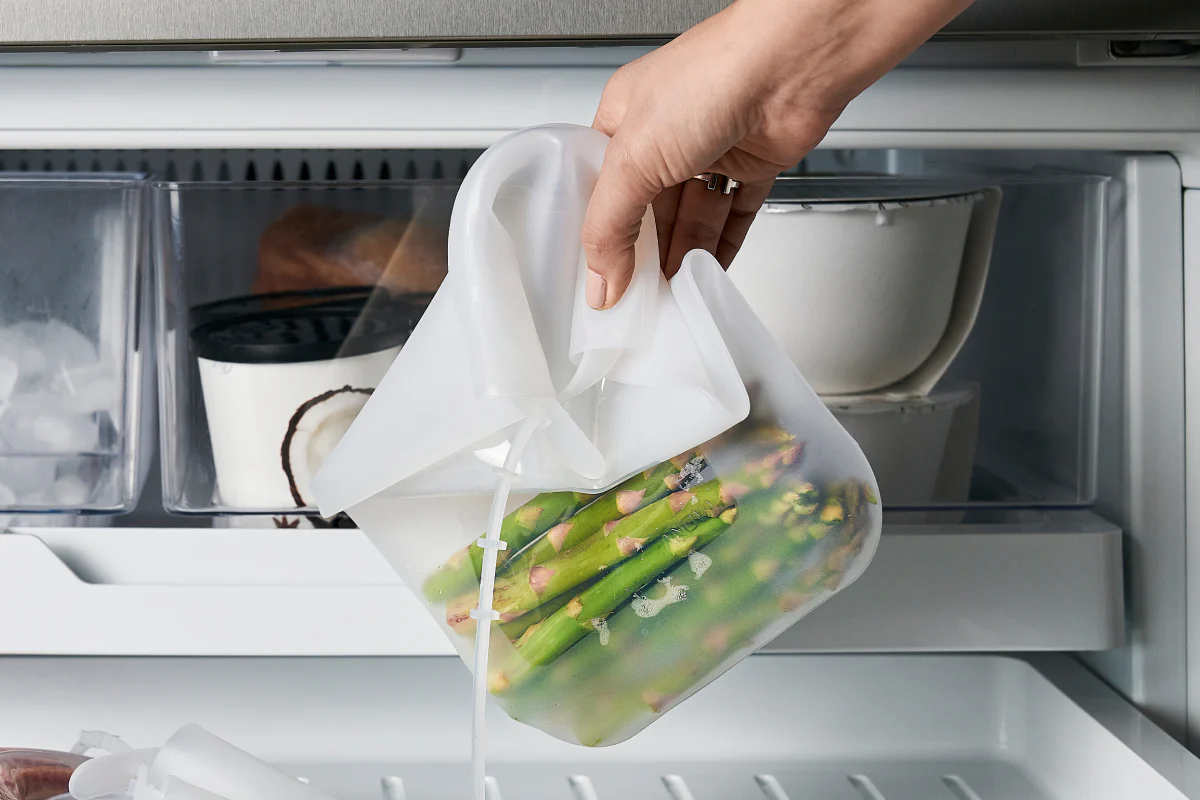
Reusable Silicone Bags
Reusable sous vide bags made from silicone, like these Stasher bags, make it easy to enjoy the same quality results every time you cook, without any of the waste.
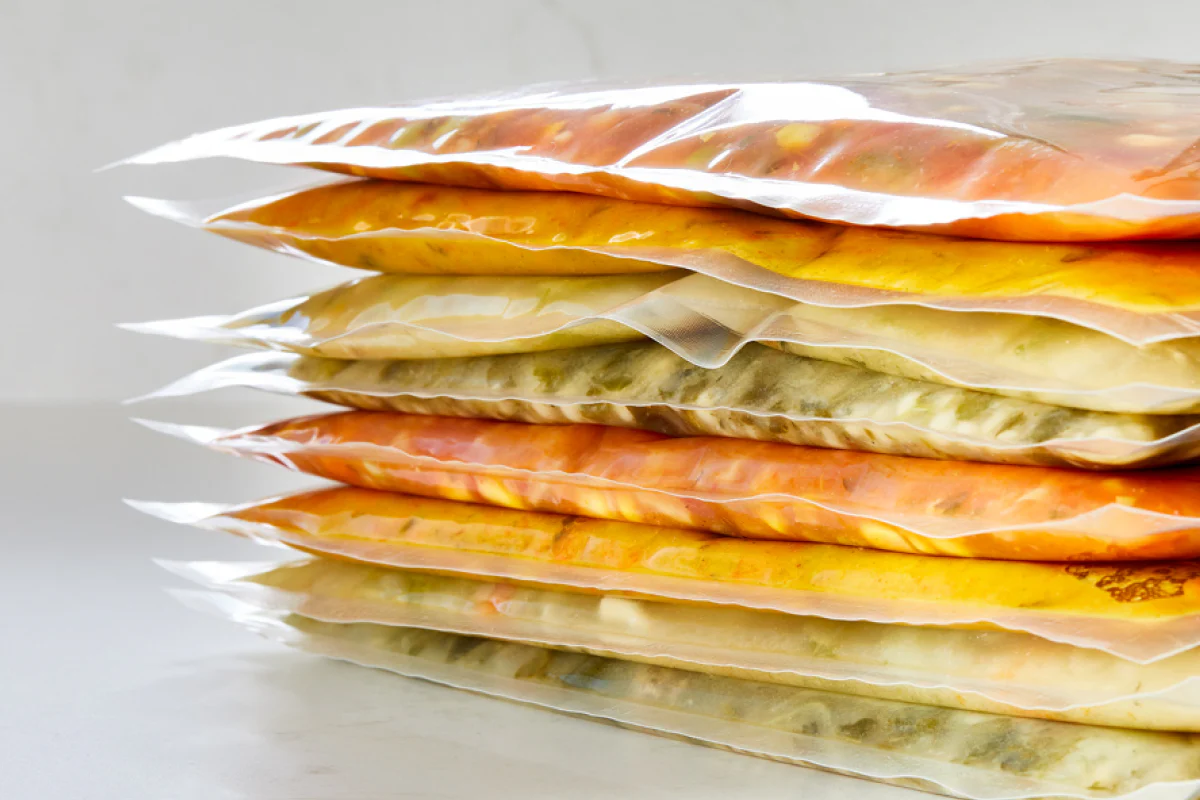
Vacuum Sealing Bags
While you don’t need to purchase a vacuum sealer and vacuum seal bags to cook sous vide, they do work well, especially for batch cooking. Anova Precision™ Vacuum Sealer Bags are fridge and freezer-safe and designed to support long sous vide cooks as well.
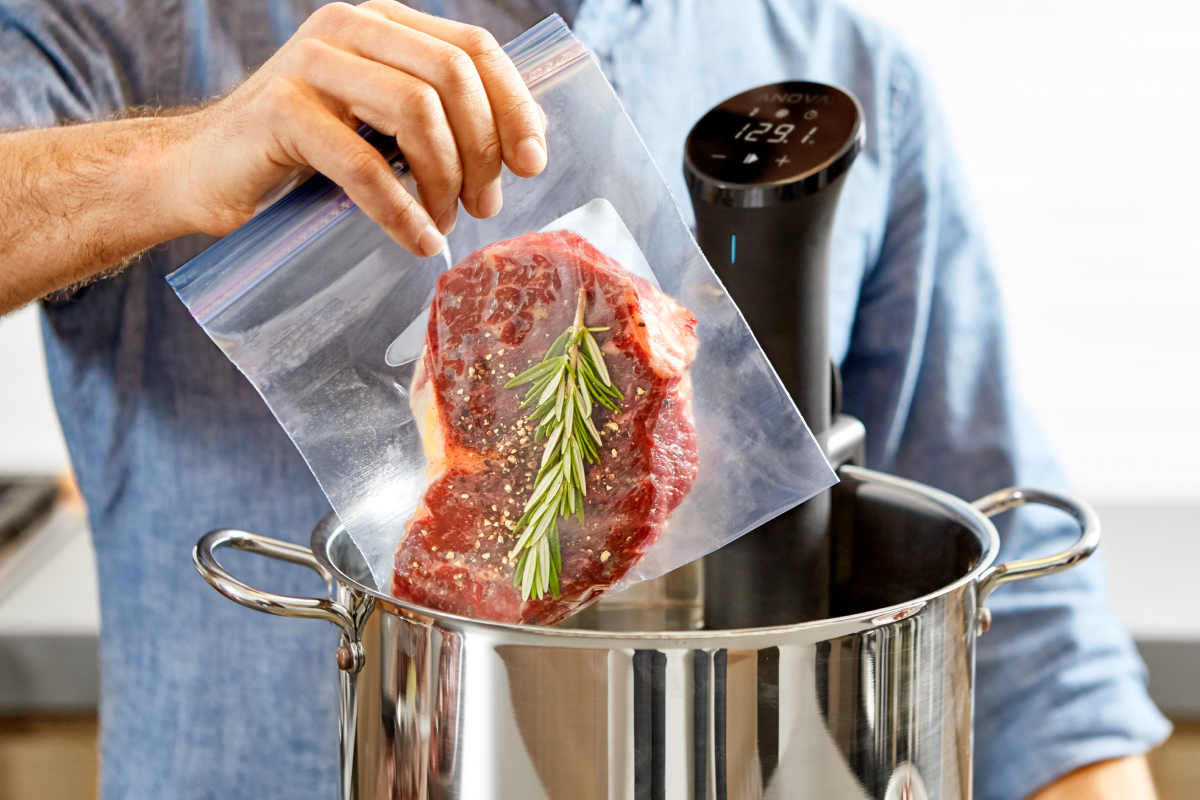
Resealable Bags
Resealable bags are very versatile, and can be used with the water immersion method to remove air from the bag. We recommend heavy-duty, BPA-free bags, like Ziplock’s freezer bags for short cooks under 170°F.
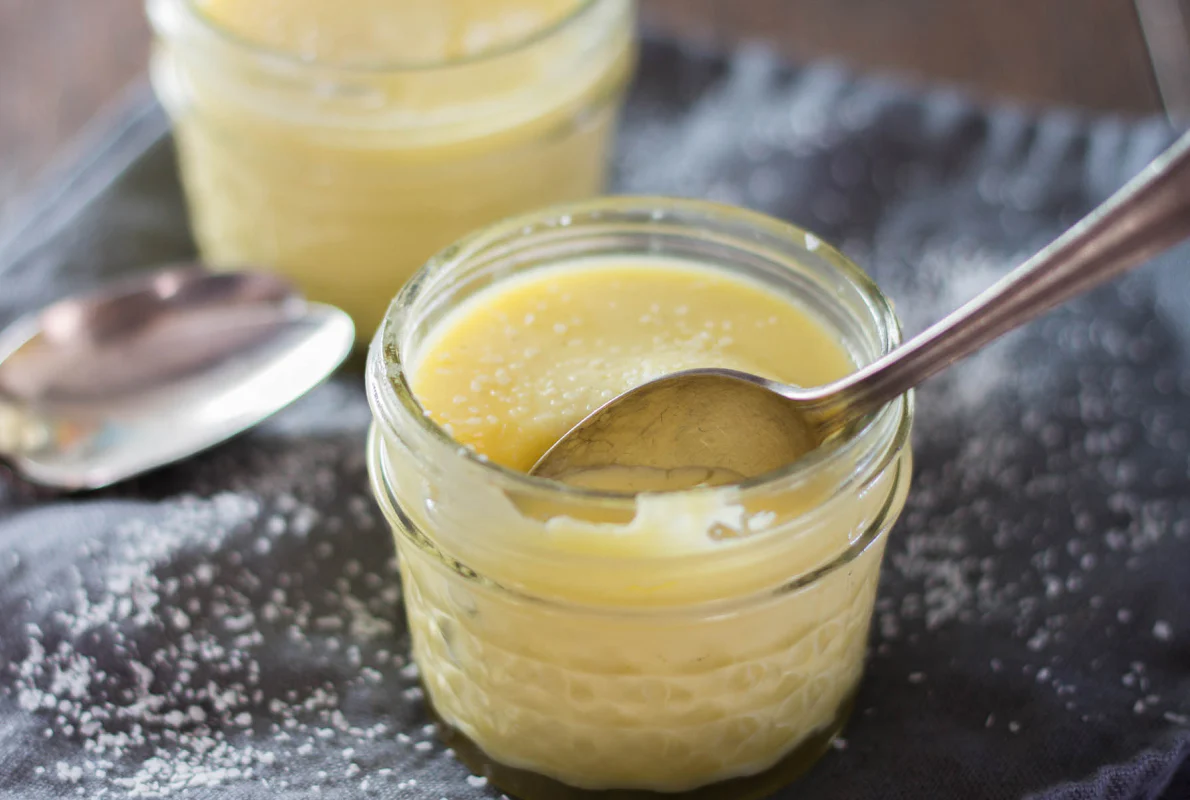
Canning Jars
Several different types of foods can also be cooked in glass canning jars. Beans and grains both work well in jars, as do desserts such as cakes and custards. Get tips on cooking sous vide with jars in our Guide to Sous Vide Cooking with Canning Jars.
Sous Vide Containers
Anova Precision Cookers attach to the side of most pots or vessels with an adjustable clamp, so you can use pots you already have at home. However, if you’re planning to cook a lot of food at once, a dedicated container is a great choice. Explore the options we offer below.
-
Anova Precision™ Cooker Insulated Container
Regular price $149.00Regular priceUnit price per -

 Sold out
Sold outAnova Precision™ 12L Container
Regular price $80.00Regular priceUnit price per$89.00Sale price $80.00Sold out -

 Sold out
Sold outAnova Precision™ 16L Container
Regular price $98.00Regular priceUnit price per$109.00Sale price $98.00Sold out







